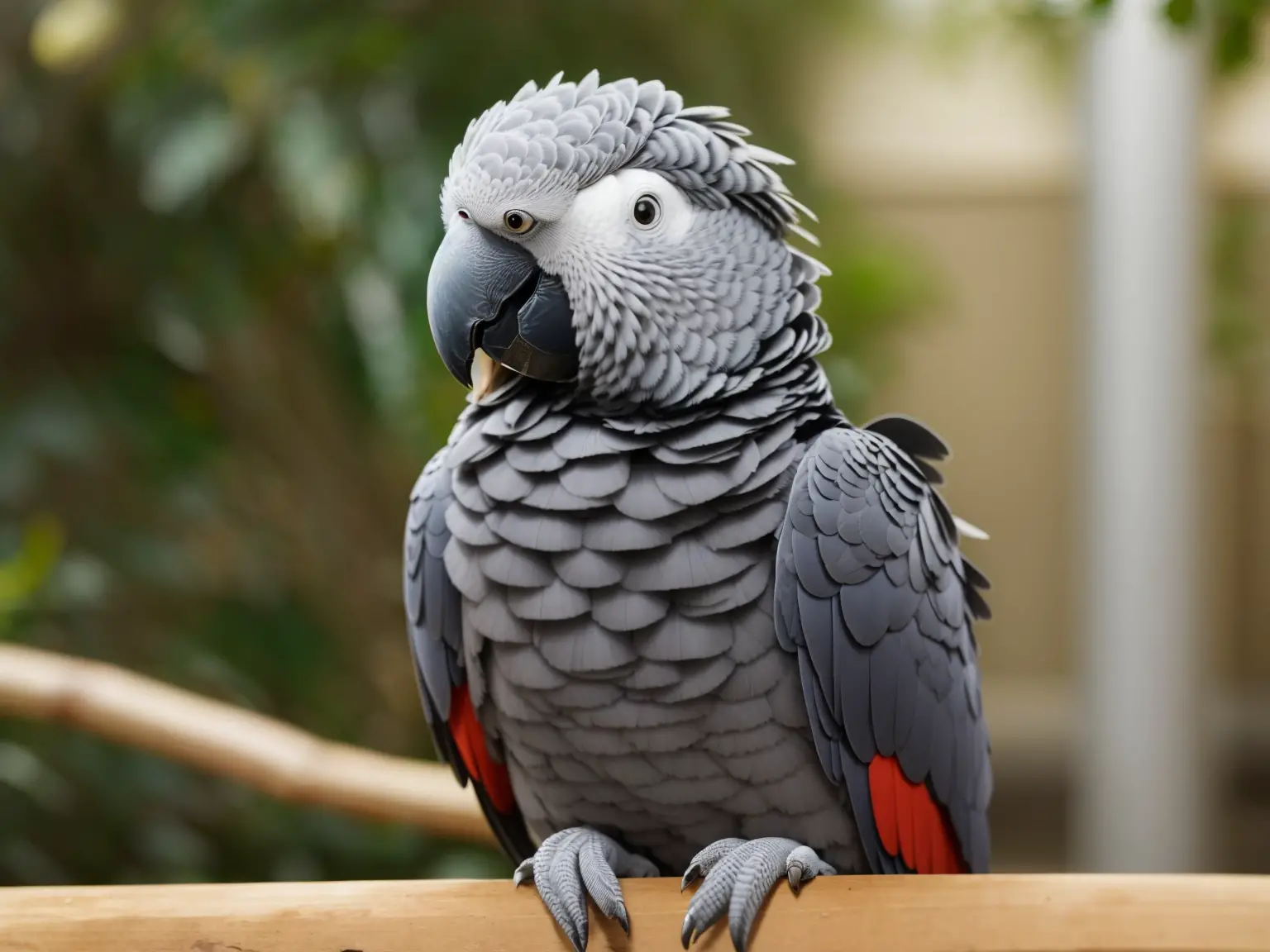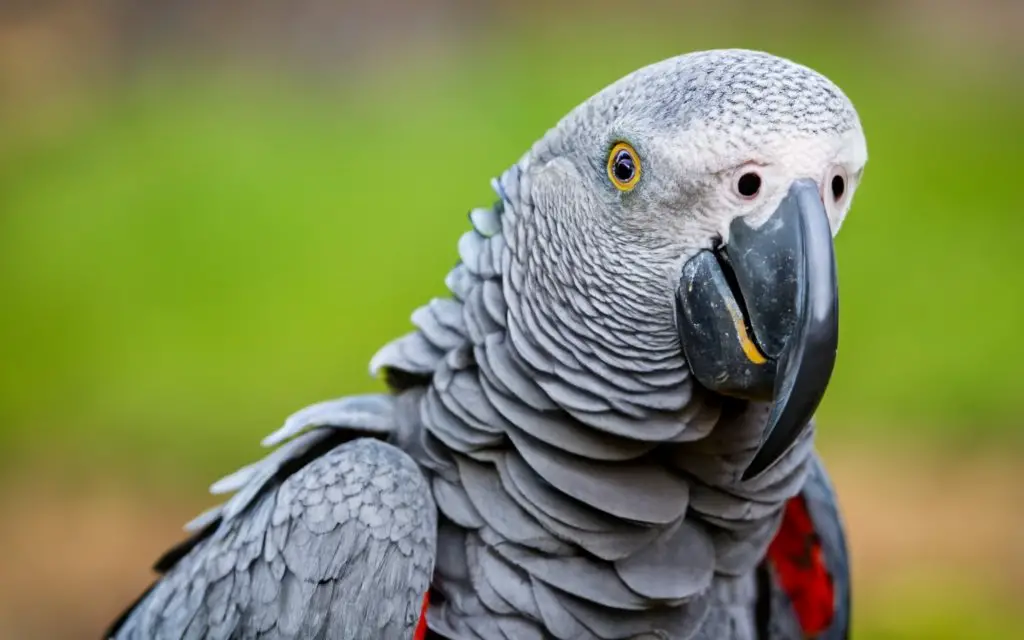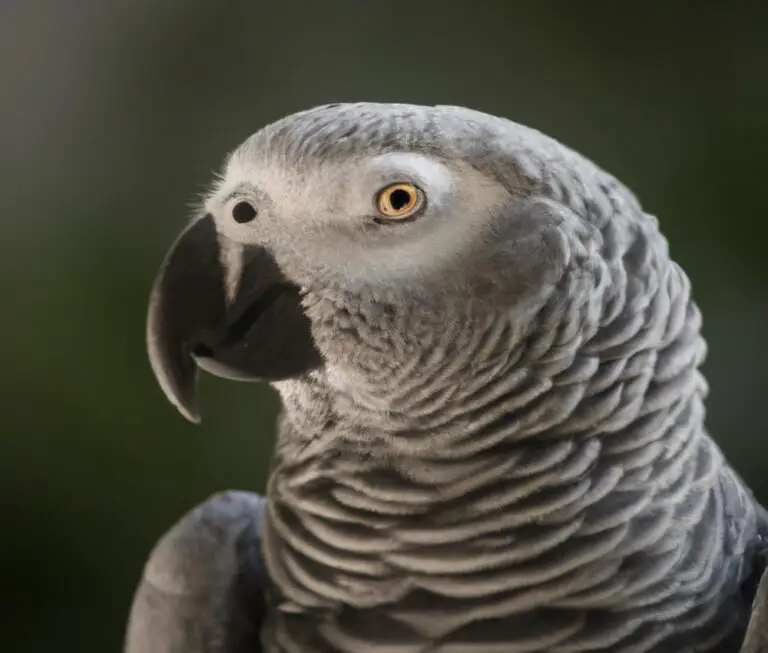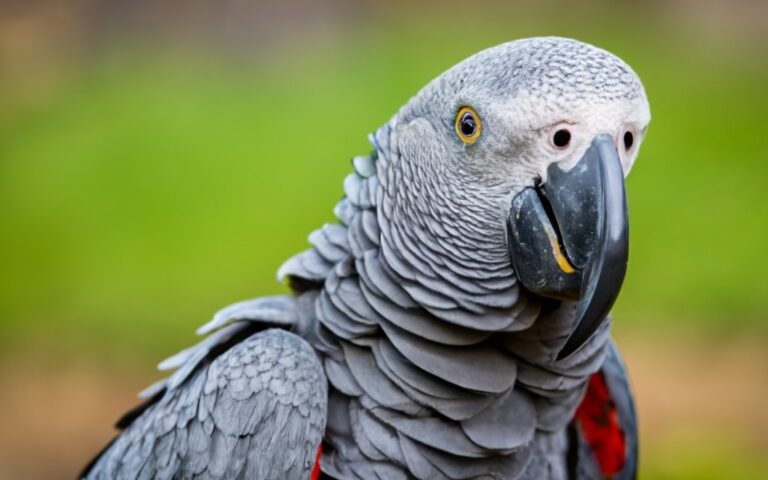How Do African Grey Parrots Hear?
Key Takeaways:
- African grey parrots have exceptional hearing abilities due to complex inner ear structures.
- They can detect a wide range of frequencies, including sounds beyond human hearing.
- African grey parrots have specialized vocalizations and mimicry skills.
- Their hearing plays a crucial role in communication, social interactions, and survival in their natural habitat.
Have you ever wondered how African grey parrots are able to hear and interpret sounds?
It’s truly fascinating how these intelligent birds perceive the world around them through their exceptional hearing abilities.
In this article, we will explore the intricate anatomy of their ears and the mechanisms by which they process and understand sounds.
We’ll also delve into their unique communication skills and the various types of vocalizations they are capable of.
Additionally, we’ll touch upon common hearing problems that can affect African grey parrots and how to address them.
So, get ready to dive into the intriguing world of African grey parrots’ hearing!
| Topic | How do African grey parrots hear? |
|---|---|
| Structure | African grey parrots have a well-developed auditory system. |
| Hearing Range | They can hear a wide range of frequencies, ranging from 0.4 to 8 kHz. |
| Sensitivity | They have highly sensitive hearing and can pick up subtle sounds. |
| Sound Localization | African grey parrots have excellent sound localization abilities, enabling them to pinpoint the source of a sound accurately. |
| Communication | They use their hearing abilities to communicate with other parrots, mimicking various sounds and vocalizations. |
| Learning | Hearing plays a crucial role in their ability to learn and imitate human speech and other sounds. |
Understanding the Anatomy of African Grey Parrots’ Ears
African Grey Parrots have unique ear structures that allow them to hear a wide range of sounds.
The External Ear Structures of African Grey Parrots
The external ear structures of African Grey Parrots consist of a visible ear hole called the external auditory meatus and a protective structure known as the ear coverts. These feathers cover the ears and help to protect them from dust, debris, and potential injuries.

The Middle Ear Mechanism in African Grey Parrots
he Middle Ear Mechanism in African Grey Parrots consists of three main components: the eardrum, three tiny bones (the ossicles), and the eustachian tube. These components work together to transmit and amplify sound vibrations from the outer ear to the inner ear.
The eardrum vibrates in response to sound waves, which then causes the ossicles to transmit these vibrations to the cochlea in the inner ear.
The eustachian tube helps to equalize the pressure between the middle ear and the environment, ensuring optimal hearing.

The Inner Ear of African Grey Parrots
The inner ear of African Grey Parrots is responsible for their hearing and balance. It consists of the cochlea, which converts sound vibrations into electrical signals, and the vestibular system, which helps them maintain their balance.
This complex system allows them to perceive and interpret sounds in their environment accurately.
How African Grey Parrots Perceive and Interpret Sounds
African Grey Parrots have a remarkable ability to perceive and interpret a wide range of sounds.
The Frequency Range of African Grey Parrots’ Hearing
African Grey Parrots have an impressive frequency range of hearing.
They can perceive sounds within the range of 200 Hz to 8 kHz. This means they are capable of hearing a wide variety of pitches and tones.
Their ability to detect both low and high frequencies allows them to communicate effectively and interpret different sounds in their environment.
How African Grey Parrots Determine Sound Direction
African Grey Parrots determine sound direction through a process called interaural time difference. Their brain compares the slight time delay between when a sound reaches each ear, helping them pinpoint where the sound is coming from.
This ability allows them to locate and focus on specific sounds in their environment.
African Grey Parrots’ Ability to Recognize Human Speech
African grey parrots have an impressive ability to recognize and mimic human speech. They can learn and understand words, phrases, and even sentences.
This is because they have a highly developed auditory system and the ability to mimic sounds.
They can also associate words with their meanings, demonstrating their cognitive abilities. This makes them excellent at mimicking human speech and engaging in verbal communication.

Communication and Vocalizations of African Grey Parrots
African Grey Parrots have complex vocalizations and use them to communicate with each other and their human companions.
How African Grey Parrots Mimic Sounds and Human Speech
African Grey Parrots have an exceptional ability to mimic sounds and human speech.
They accomplish this by using their vocal anatomy, specifically their syrinx, which is a unique vocal organ found in birds.
By controlling the muscles in their syrinx, African Grey Parrots can mimic a wide range of sounds, including human speech.
They learn by listening to and imitating the sounds they hear in their environment.
With proper training and social interaction, they can become skilled at mimicking words and phrases with impressive accuracy.
It’s important to note that not all African Grey Parrots will mimic speech, as it depends on their individual personality and environment.

Different Types of Vocalizations and Their Meaning
Different Types of Vocalizations and Their Meaning
- Squawking: This loud, harsh vocalization is usually a sign of distress or alarm. The parrot may be feeling threatened or agitated.
- Whistling: Whistling is a common vocalization for African Grey parrots. They may whistle to get attention, express happiness, or mimic sounds they have heard.
- Chattering: Chattering sounds like rapid, short bursts of sound. It is often a sign of excitement, playfulness, or curiosity.
- Mimicking: African Grey parrots are known for their exceptional ability to mimic human speech and other sounds. They can imitate words, phrases, and even household sounds like phone ringing or microwave beeping.
- Purring: When an African Grey parrot purrs, it shows contentment and relaxation. It is a soft, low, vibrating sound that they make when they are comfortable and feel safe.
- Screaming: Although not as common, African Grey parrots can sometimes scream to express frustration, boredom, or a need for attention. It is important to address the underlying cause and provide them with mental and physical stimulation.
Understanding and interpreting these vocalizations will help you better communicate and develop a bond with your African Grey parrot.
Training African Grey Parrots to Communicate Verbally
To train African Grey Parrots to communicate verbally, the key is consistency and positive reinforcement. Start by teaching them basic words or phrases, using treats or praise as a reward.
Gradually increase the vocabulary and reinforce the behavior.
Repetition and patience are crucial. You can also use audio recordings or videos to enhance their learning experience.
With time and dedication, your African Grey Parrot can become an excellent verbal communicator.
Common Hearing Problems in African Grey Parrots
African Grey Parrots can experience age-related hearing loss and ear infections, which are common hearing problems that may require identification and treatment.
Providing preventive measures can also help to maintain healthy hearing in these parrots.
Age-related Hearing Loss in African Grey Parrots
Age-related hearing loss can occur in African Grey Parrots as they get older, just like humans. The gradual loss of hearing can impact their ability to communicate and interact with their environment.
It is important to monitor their hearing and provide them with appropriate care to maintain their quality of life.
Identifying and Treating Ear Infections in African Grey Parrots
Identifying and treating ear infections in African Grey Parrots involves close observation of their behavior and physical symptoms.
If you notice any signs of discomfort, such as head shaking, scratching, or excessive ear flapping, it could indicate an ear infection.
A veterinarian will perform a thorough examination and may prescribe medication, such as antibiotics or antifungal medications, to treat the infection.
Regular check-ups and proper hygiene can help prevent ear infections in your African Grey Parrot.
Preventive Measures to Maintain Healthy Hearing in African Grey Parrots
To maintain healthy hearing in African Grey Parrots:
- Keep their environment quiet: Loud noises can damage their delicate hearing. Avoid exposing them to loud music, construction noises, or excessive household noise.
- Limit exposure to toxins: Certain household chemicals, smoking, and air pollutants can harm their sensitive ears. Keep their living area clean and free from harmful substances.
- Regular vet check-ups: Schedule regular visits to the avian veterinarian to check for any signs of hearing problems or infections. Early detection can prevent further complications.
- Provide a balanced diet: A nutritious diet rich in vitamins and minerals can support overall health, including their hearing. Consult with a veterinarian to determine the best diet for your African Grey Parrot.
- Avoid repetitive or excessive noise: Continuous exposure to repetitive or loud sounds can be stressful and detrimental to their hearing. Keep a calm environment and minimize unnecessary noise.
Remember, prevention is key in maintaining healthy hearing in African Grey Parrots. By implementing these measures, you can help ensure a lifetime of clear and healthy hearing for your feathered friend.
Frequently Asked Questions
Can African Grey Parrots hear better than humans?
No, African Grey Parrots cannot hear better than humans. While they have excellent hearing abilities, humans still have a wider range and better sensitivity to certain frequencies.
However, African Grey Parrots can perceive sounds at higher frequencies than humans can, making them highly attuned to certain sounds in their environment.
How can I test my African Grey Parrot’s hearing?
To test your African Grey Parrot’s hearing, you can perform a simple auditory test.
Start by making a variety of sounds at different volumes and frequencies.
Observe your parrot’s reaction to these sounds, such as turning their head, showing interest, or responding with vocalizations.
If your parrot seems to respond consistently to certain sounds, it indicates that their hearing is intact.
Do African Grey Parrots have sensitive hearing?
Yes, African Grey Parrots have sensitive hearing. Their ability to hear and interpret sounds is highly developed.
They can perceive a wide range of frequencies, detect the direction of sounds, and even recognize human speech.
Their sensitive hearing plays a crucial role in their communication and vocalizations. However, like any living creature, they are also susceptible to hearing problems such as age-related hearing loss and ear infections.
Regular check-ups and preventive measures can help maintain their healthy hearing.
Can hearing problems affect an African Grey Parrot’s behavior?
Yes, hearing problems can affect an African Grey Parrot’s behavior.
It may lead to changes in their vocalizations, difficulty in recognizing sounds or directions, and even cause frustration or anxiety.
Early identification and treatment are essential to minimize the impact on their behavior and overall well-being.
Final Verdict
African Grey Parrots have a complex auditory system that allows them to perceive and interpret sounds with incredible precision. Their external ear structures, middle ear mechanism, and inner ear function together to capture, amplify, and transmit sounds to their brain.
These intelligent birds have a wide frequency range, can determine sound direction, and are capable of recognizing and mimicking human speech.
However, hearing problems, such as age-related hearing loss or ear infections, can affect their behavior and overall well-being. Therefore, it is important for parrot owners to regularly monitor their pet’s hearing health and take preventive measures to ensure their auditory system remains in good condition.
By understanding how African Grey Parrots hear, we can provide them with the care and attention they need to thrive in their auditory-rich environment.






